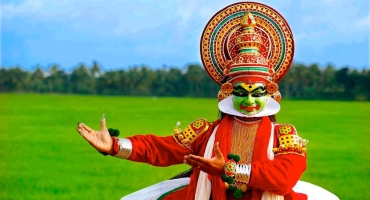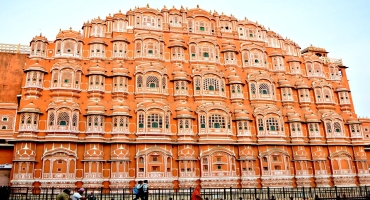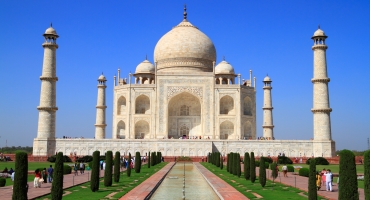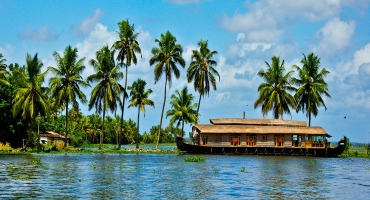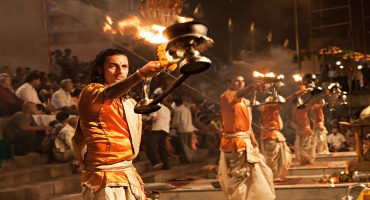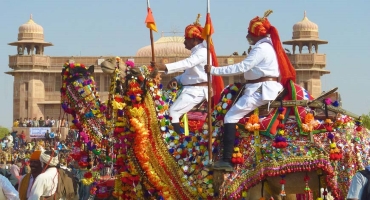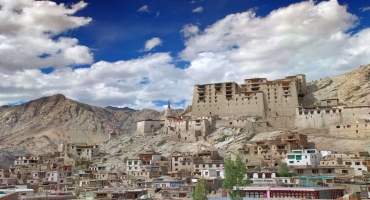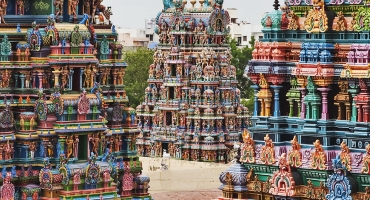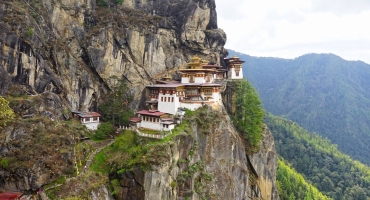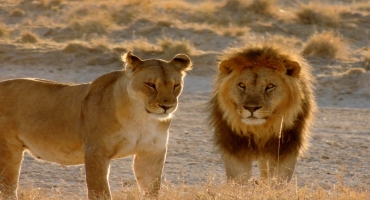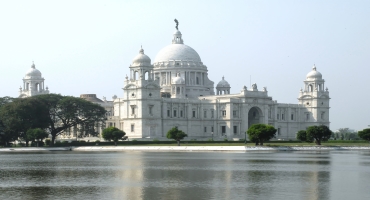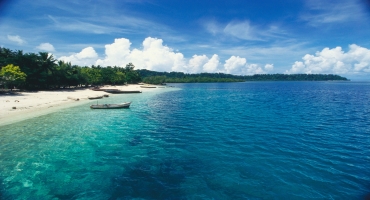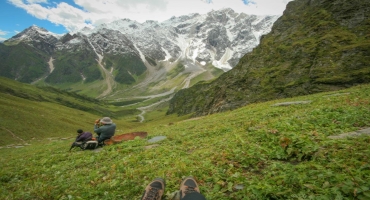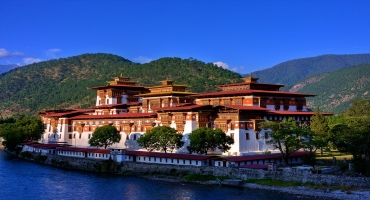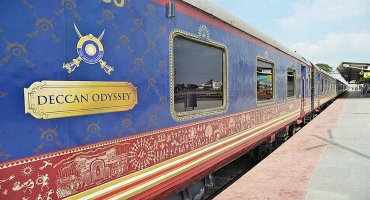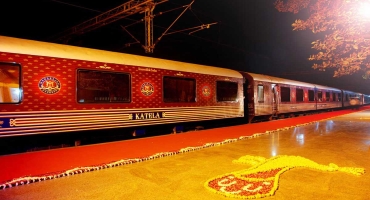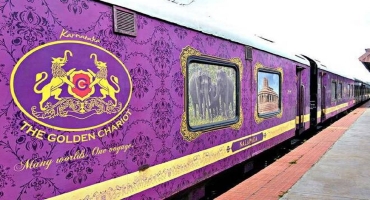| 1 | SELECT WpPost.post_content,WpPost.guid,WpPost.post_date,WpPost.post_title,WpPostmeta2.meta_value FROM `u407119412_tripoffbeat2`.`wp_posts` AS `WpPost` left JOIN `u407119412_tripoffbeat2`.`wp_postmeta` AS `WpPostmeta1` ON (`WpPostmeta1`.`post_id` = `WpPost`.`ID` AND `WpPostmeta1`.`meta_key` = "_thumbnail_id") left JOIN `u407119412_tripoffbeat2`.`wp_postmeta` AS `WpPostmeta2` ON (`WpPostmeta2`.`post_id` = `WpPostmeta1`.`meta_value` AND `WpPostmeta2`.`meta_key` = "_wp_attachment_metadata") WHERE `WpPost`.`post_type` = 'post' AND `WpPost`.`post_status` = 'publish' ORDER BY `WpPost`.`post_date` desc | | 63 | 63 | 11 |
| 2 | SELECT `City`.`id`, `City`.`name` FROM `u407119412_tripoffbeat2`.`cities` AS `City` WHERE `City`.`is_weekends` = 1 ORDER BY `City`.`name` asc | | 8 | 8 | 0 |
| 3 | SELECT `City`.`id`, `City`.`name` FROM `u407119412_tripoffbeat2`.`cities` AS `City` WHERE `City`.`is_vacations` = 1 ORDER BY `City`.`name` asc | | 8 | 8 | 0 |
| 4 | SELECT `Category`.`id`, `Category`.`name`, `Category`.`slug` FROM `u407119412_tripoffbeat2`.`categories` AS `Category` WHERE `Category`.`status` = 1 AND `Category`.`is_delete` = 0 AND `Category`.`is_weekends` = 1 | | 9 | 9 | 0 |
| 5 | SELECT `Category`.`id`, `Category`.`name`, `Category`.`slug` FROM `u407119412_tripoffbeat2`.`categories` AS `Category` WHERE `Category`.`status` = 1 AND `Category`.`is_delete` = 0 AND `Category`.`is_vacations` = 1 | | 9 | 9 | 0 |
| 6 | SELECT `Category`.`id`, `Category`.`name` FROM `u407119412_tripoffbeat2`.`categories` AS `Category` WHERE `Category`.`status` = 1 AND `Category`.`is_delete` = 0 AND `Category`.`is_destinations` = 1 | | 9 | 9 | 0 |
| 7 | SELECT `State`.`id`, `State`.`name`, `State`.`slug` FROM `u407119412_tripoffbeat2`.`states` AS `State` WHERE `State`.`is_destinations` = 1 ORDER BY `State`.`name` asc | | 14 | 14 | 0 |
| 8 | SELECT `State`.`id`, `State`.`name`, `State`.`thumb`, `State`.`slug` FROM `u407119412_tripoffbeat2`.`states` AS `State` WHERE `State`.`is_weekends` = 1 ORDER BY `State`.`name` asc | | 6 | 6 | 0 |
| 9 | SELECT Activity.id, Activity.activity_name, Activity.slug, `Activity`.`id` FROM `u407119412_tripoffbeat2`.`activities` AS `Activity` WHERE `Activity`.`is_weekends` = 1 | | 6 | 6 | 0 |
| 10 | SELECT `ResortActivity`.`id`, `ResortActivity`.`activity_id`, `ResortActivity`.`resort_id` FROM `u407119412_tripoffbeat2`.`resort_activities` AS `ResortActivity` WHERE `ResortActivity`.`activity_id` IN (40, 43, 44, 45, 46, 50) | | 624 | 624 | 1 |
| 11 | SELECT `Package`.`id`, `Package`.`pkg_name`, `Package`.`pkg_slug`, `Package`.`meta_title`, `Package`.`meta_keywords`, `Package`.`meta_desc`, `Package`.`pkg_thumb`, `Package`.`pkg_thumb_large`, `Package`.`pkg_thumb_alt`, `Package`.`pkg_amount`, `Package`.`list_price`, `Package`.`bulk_discount`, `Package`.`pkg_duration`, `Package`.`pkg_location`, `Package`.`travel_dates`, `Package`.`available_packages`, `Package`.`tripoffbeat_offer`, `Package`.`inclusions`, `Package`.`how_to_redeem`, `Package`.`extra_adult_and_children`, `Package`.`how_to_cancel`, `Package`.`detailed_inclusions`, `Package`.`pkg_valadity`, `Package`.`resort_to_choose_from`, `Package`.`itinerary`, `Package`.`package_highlights`, `Package`.`pkg_locations`, `Package`.`start_on`, `Package`.`expire_on`, `Package`.`update_on`, `Package`.`status`, `Package`.`is_delete` FROM `u407119412_tripoffbeat2`.`packages` AS `Package` WHERE `Package`.`pkg_slug` = 'central-india-wildlife-temples-and-taj-mahal' LIMIT 1 | | 1 | 1 | 0 |
| 12 | SELECT `PackageOption`.`id`, `PackageOption`.`package_id`, `PackageOption`.`option_title`, `PackageOption`.`option_descn`, `PackageOption`.`created_on`, `PackageOption`.`updated_on`, `PackageOption`.`status` FROM `u407119412_tripoffbeat2`.`package_options` AS `PackageOption` WHERE `PackageOption`.`package_id` = (12) | | 0 | 0 | 0 |
| 13 | SELECT `PackageCity`.`id`, `PackageCity`.`package_id`, `PackageCity`.`city_id`, `PackageCity`.`Label` FROM `u407119412_tripoffbeat2`.`package_cities` AS `PackageCity` WHERE `PackageCity`.`package_id` = (12) | | 9 | 9 | 0 |
| 14 | SELECT `Package`.`id`, `Package`.`pkg_name`, `Package`.`pkg_slug`, `Package`.`meta_title`, `Package`.`meta_keywords`, `Package`.`meta_desc`, `Package`.`pkg_thumb`, `Package`.`pkg_thumb_large`, `Package`.`pkg_thumb_alt`, `Package`.`pkg_amount`, `Package`.`list_price`, `Package`.`bulk_discount`, `Package`.`pkg_duration`, `Package`.`pkg_location`, `Package`.`travel_dates`, `Package`.`available_packages`, `Package`.`tripoffbeat_offer`, `Package`.`inclusions`, `Package`.`how_to_redeem`, `Package`.`extra_adult_and_children`, `Package`.`how_to_cancel`, `Package`.`detailed_inclusions`, `Package`.`pkg_valadity`, `Package`.`resort_to_choose_from`, `Package`.`itinerary`, `Package`.`package_highlights`, `Package`.`pkg_locations`, `Package`.`start_on`, `Package`.`expire_on`, `Package`.`update_on`, `Package`.`status`, `Package`.`is_delete` FROM `u407119412_tripoffbeat2`.`packages` AS `Package` WHERE 1 = 1 | | 23 | 23 | 1 |
| 15 | SELECT `PackageOption`.`id`, `PackageOption`.`package_id`, `PackageOption`.`option_title`, `PackageOption`.`option_descn`, `PackageOption`.`created_on`, `PackageOption`.`updated_on`, `PackageOption`.`status` FROM `u407119412_tripoffbeat2`.`package_options` AS `PackageOption` WHERE `PackageOption`.`package_id` IN (1, 2, 3, 4, 5, 6, 7, 8, 9, 11, 12, 13, 14, 15, 16, 17, 18, 19, 20, 21, 22, 23, 24) | | 86 | 86 | 0 |
| 16 | SELECT `PackageCity`.`id`, `PackageCity`.`package_id`, `PackageCity`.`city_id`, `PackageCity`.`Label` FROM `u407119412_tripoffbeat2`.`package_cities` AS `PackageCity` WHERE `PackageCity`.`package_id` IN (1, 2, 3, 4, 5, 6, 7, 8, 9, 11, 12, 13, 14, 15, 16, 17, 18, 19, 20, 21, 22, 23, 24) | | 181 | 181 | 0 |
| 17 | SELECT WpPost.post_content,WpPost.guid,WpPost.post_date,WpPost.post_title,WpPostmeta2.meta_value FROM `u407119412_tripoffbeat2`.`wp_posts` AS `WpPost` left JOIN `u407119412_tripoffbeat2`.`wp_postmeta` AS `WpPostmeta1` ON (`WpPostmeta1`.`post_id` = `WpPost`.`ID` AND `WpPostmeta1`.`meta_key` = "_thumbnail_id") left JOIN `u407119412_tripoffbeat2`.`wp_postmeta` AS `WpPostmeta2` ON (`WpPostmeta2`.`post_id` = `WpPostmeta1`.`meta_value` AND `WpPostmeta2`.`meta_key` = "_wp_attachment_metadata") WHERE `WpPost`.`post_type` = 'post' AND `WpPost`.`post_status` = 'publish' ORDER BY `WpPost`.`post_date` desc | | 63 | 63 | 10 |
| 18 | SELECT `City`.`id`, `City`.`name` FROM `u407119412_tripoffbeat2`.`cities` AS `City` WHERE `City`.`is_weekends` = 1 ORDER BY `City`.`name` asc | | 8 | 8 | 0 |
| 19 | SELECT `City`.`id`, `City`.`name` FROM `u407119412_tripoffbeat2`.`cities` AS `City` WHERE `City`.`is_vacations` = 1 ORDER BY `City`.`name` asc | | 8 | 8 | 0 |
| 20 | SELECT `Category`.`id`, `Category`.`name`, `Category`.`slug` FROM `u407119412_tripoffbeat2`.`categories` AS `Category` WHERE `Category`.`status` = 1 AND `Category`.`is_delete` = 0 AND `Category`.`is_weekends` = 1 | | 9 | 9 | 0 |
| 21 | SELECT `Category`.`id`, `Category`.`name`, `Category`.`slug` FROM `u407119412_tripoffbeat2`.`categories` AS `Category` WHERE `Category`.`status` = 1 AND `Category`.`is_delete` = 0 AND `Category`.`is_vacations` = 1 | | 9 | 9 | 0 |
| 22 | SELECT `Category`.`id`, `Category`.`name` FROM `u407119412_tripoffbeat2`.`categories` AS `Category` WHERE `Category`.`status` = 1 AND `Category`.`is_delete` = 0 AND `Category`.`is_destinations` = 1 | | 9 | 9 | 0 |
| 23 | SELECT `State`.`id`, `State`.`name`, `State`.`slug` FROM `u407119412_tripoffbeat2`.`states` AS `State` WHERE `State`.`is_destinations` = 1 ORDER BY `State`.`name` asc | | 14 | 14 | 0 |
| 24 | SELECT `State`.`id`, `State`.`name`, `State`.`thumb`, `State`.`slug` FROM `u407119412_tripoffbeat2`.`states` AS `State` WHERE `State`.`is_weekends` = 1 ORDER BY `State`.`name` asc | | 6 | 6 | 0 |
| 25 | SELECT Activity.id, Activity.activity_name, Activity.slug, `Activity`.`id` FROM `u407119412_tripoffbeat2`.`activities` AS `Activity` WHERE `Activity`.`is_weekends` = 1 | | 6 | 6 | 0 |
| 26 | SELECT `ResortActivity`.`id`, `ResortActivity`.`activity_id`, `ResortActivity`.`resort_id` FROM `u407119412_tripoffbeat2`.`resort_activities` AS `ResortActivity` WHERE `ResortActivity`.`activity_id` IN (40, 43, 44, 45, 46, 50) | | 624 | 624 | 1 |
| 27 | SELECT `City`.`id`, `City`.`name`, `City`.`state_id`, `City`.`latitude`, `City`.`longitude`, `City`.`is_weekends`, `City`.`is_vacations`, `City`.`is_offsites`, `City`.`is_index_parent_id`, `City`.`is_index_parent_type` FROM `u407119412_tripoffbeat2`.`cities` AS `City` WHERE `City`.`id` = 707 LIMIT 1 | | 1 | 1 | 0 |
| 28 | SELECT WpPost.post_content,WpPost.guid,WpPost.post_date,WpPost.post_title,WpPostmeta2.meta_value FROM `u407119412_tripoffbeat2`.`wp_posts` AS `WpPost` left JOIN `u407119412_tripoffbeat2`.`wp_postmeta` AS `WpPostmeta1` ON (`WpPostmeta1`.`post_id` = `WpPost`.`ID` AND `WpPostmeta1`.`meta_key` = "_thumbnail_id") left JOIN `u407119412_tripoffbeat2`.`wp_postmeta` AS `WpPostmeta2` ON (`WpPostmeta2`.`post_id` = `WpPostmeta1`.`meta_value` AND `WpPostmeta2`.`meta_key` = "_wp_attachment_metadata") WHERE `WpPost`.`post_type` = 'post' AND `WpPost`.`post_status` = 'publish' ORDER BY `WpPost`.`post_date` desc | | 63 | 63 | 7 |
| 29 | SELECT `City`.`id`, `City`.`name` FROM `u407119412_tripoffbeat2`.`cities` AS `City` WHERE `City`.`is_weekends` = 1 ORDER BY `City`.`name` asc | | 8 | 8 | 0 |
| 30 | SELECT `City`.`id`, `City`.`name` FROM `u407119412_tripoffbeat2`.`cities` AS `City` WHERE `City`.`is_vacations` = 1 ORDER BY `City`.`name` asc | | 8 | 8 | 0 |
| 31 | SELECT `Category`.`id`, `Category`.`name`, `Category`.`slug` FROM `u407119412_tripoffbeat2`.`categories` AS `Category` WHERE `Category`.`status` = 1 AND `Category`.`is_delete` = 0 AND `Category`.`is_weekends` = 1 | | 9 | 9 | 0 |
| 32 | SELECT `Category`.`id`, `Category`.`name`, `Category`.`slug` FROM `u407119412_tripoffbeat2`.`categories` AS `Category` WHERE `Category`.`status` = 1 AND `Category`.`is_delete` = 0 AND `Category`.`is_vacations` = 1 | | 9 | 9 | 0 |
| 33 | SELECT `Category`.`id`, `Category`.`name` FROM `u407119412_tripoffbeat2`.`categories` AS `Category` WHERE `Category`.`status` = 1 AND `Category`.`is_delete` = 0 AND `Category`.`is_destinations` = 1 | | 9 | 9 | 0 |
| 34 | SELECT `State`.`id`, `State`.`name`, `State`.`slug` FROM `u407119412_tripoffbeat2`.`states` AS `State` WHERE `State`.`is_destinations` = 1 ORDER BY `State`.`name` asc | | 14 | 14 | 0 |
| 35 | SELECT `State`.`id`, `State`.`name`, `State`.`thumb`, `State`.`slug` FROM `u407119412_tripoffbeat2`.`states` AS `State` WHERE `State`.`is_weekends` = 1 ORDER BY `State`.`name` asc | | 6 | 6 | 0 |
| 36 | SELECT Activity.id, Activity.activity_name, Activity.slug, `Activity`.`id` FROM `u407119412_tripoffbeat2`.`activities` AS `Activity` WHERE `Activity`.`is_weekends` = 1 | | 6 | 6 | 0 |
| 37 | SELECT `ResortActivity`.`id`, `ResortActivity`.`activity_id`, `ResortActivity`.`resort_id` FROM `u407119412_tripoffbeat2`.`resort_activities` AS `ResortActivity` WHERE `ResortActivity`.`activity_id` IN (40, 43, 44, 45, 46, 50) | | 624 | 624 | 1 |
| 38 | SELECT `City`.`id`, `City`.`name`, `City`.`state_id`, `City`.`latitude`, `City`.`longitude`, `City`.`is_weekends`, `City`.`is_vacations`, `City`.`is_offsites`, `City`.`is_index_parent_id`, `City`.`is_index_parent_type` FROM `u407119412_tripoffbeat2`.`cities` AS `City` WHERE `City`.`id` = 2715 LIMIT 1 | | 1 | 1 | 0 |
| 39 | SELECT WpPost.post_content,WpPost.guid,WpPost.post_date,WpPost.post_title,WpPostmeta2.meta_value FROM `u407119412_tripoffbeat2`.`wp_posts` AS `WpPost` left JOIN `u407119412_tripoffbeat2`.`wp_postmeta` AS `WpPostmeta1` ON (`WpPostmeta1`.`post_id` = `WpPost`.`ID` AND `WpPostmeta1`.`meta_key` = "_thumbnail_id") left JOIN `u407119412_tripoffbeat2`.`wp_postmeta` AS `WpPostmeta2` ON (`WpPostmeta2`.`post_id` = `WpPostmeta1`.`meta_value` AND `WpPostmeta2`.`meta_key` = "_wp_attachment_metadata") WHERE `WpPost`.`post_type` = 'post' AND `WpPost`.`post_status` = 'publish' ORDER BY `WpPost`.`post_date` desc | | 63 | 63 | 9 |
| 40 | SELECT `City`.`id`, `City`.`name` FROM `u407119412_tripoffbeat2`.`cities` AS `City` WHERE `City`.`is_weekends` = 1 ORDER BY `City`.`name` asc | | 8 | 8 | 0 |
| 41 | SELECT `City`.`id`, `City`.`name` FROM `u407119412_tripoffbeat2`.`cities` AS `City` WHERE `City`.`is_vacations` = 1 ORDER BY `City`.`name` asc | | 8 | 8 | 0 |
| 42 | SELECT `Category`.`id`, `Category`.`name`, `Category`.`slug` FROM `u407119412_tripoffbeat2`.`categories` AS `Category` WHERE `Category`.`status` = 1 AND `Category`.`is_delete` = 0 AND `Category`.`is_weekends` = 1 | | 9 | 9 | 0 |
| 43 | SELECT `Category`.`id`, `Category`.`name`, `Category`.`slug` FROM `u407119412_tripoffbeat2`.`categories` AS `Category` WHERE `Category`.`status` = 1 AND `Category`.`is_delete` = 0 AND `Category`.`is_vacations` = 1 | | 9 | 9 | 0 |
| 44 | SELECT `Category`.`id`, `Category`.`name` FROM `u407119412_tripoffbeat2`.`categories` AS `Category` WHERE `Category`.`status` = 1 AND `Category`.`is_delete` = 0 AND `Category`.`is_destinations` = 1 | | 9 | 9 | 0 |
| 45 | SELECT `State`.`id`, `State`.`name`, `State`.`slug` FROM `u407119412_tripoffbeat2`.`states` AS `State` WHERE `State`.`is_destinations` = 1 ORDER BY `State`.`name` asc | | 14 | 14 | 0 |
| 46 | SELECT `State`.`id`, `State`.`name`, `State`.`thumb`, `State`.`slug` FROM `u407119412_tripoffbeat2`.`states` AS `State` WHERE `State`.`is_weekends` = 1 ORDER BY `State`.`name` asc | | 6 | 6 | 0 |
| 47 | SELECT Activity.id, Activity.activity_name, Activity.slug, `Activity`.`id` FROM `u407119412_tripoffbeat2`.`activities` AS `Activity` WHERE `Activity`.`is_weekends` = 1 | | 6 | 6 | 0 |
| 48 | SELECT `ResortActivity`.`id`, `ResortActivity`.`activity_id`, `ResortActivity`.`resort_id` FROM `u407119412_tripoffbeat2`.`resort_activities` AS `ResortActivity` WHERE `ResortActivity`.`activity_id` IN (40, 43, 44, 45, 46, 50) | | 624 | 624 | 1 |
| 49 | SELECT `City`.`id`, `City`.`name`, `City`.`state_id`, `City`.`latitude`, `City`.`longitude`, `City`.`is_weekends`, `City`.`is_vacations`, `City`.`is_offsites`, `City`.`is_index_parent_id`, `City`.`is_index_parent_type` FROM `u407119412_tripoffbeat2`.`cities` AS `City` WHERE `City`.`id` = 48392 LIMIT 1 | | 1 | 1 | 0 |
| 50 | SELECT WpPost.post_content,WpPost.guid,WpPost.post_date,WpPost.post_title,WpPostmeta2.meta_value FROM `u407119412_tripoffbeat2`.`wp_posts` AS `WpPost` left JOIN `u407119412_tripoffbeat2`.`wp_postmeta` AS `WpPostmeta1` ON (`WpPostmeta1`.`post_id` = `WpPost`.`ID` AND `WpPostmeta1`.`meta_key` = "_thumbnail_id") left JOIN `u407119412_tripoffbeat2`.`wp_postmeta` AS `WpPostmeta2` ON (`WpPostmeta2`.`post_id` = `WpPostmeta1`.`meta_value` AND `WpPostmeta2`.`meta_key` = "_wp_attachment_metadata") WHERE `WpPost`.`post_type` = 'post' AND `WpPost`.`post_status` = 'publish' ORDER BY `WpPost`.`post_date` desc | | 63 | 63 | 11 |
| 51 | SELECT `City`.`id`, `City`.`name` FROM `u407119412_tripoffbeat2`.`cities` AS `City` WHERE `City`.`is_weekends` = 1 ORDER BY `City`.`name` asc | | 8 | 8 | 0 |
| 52 | SELECT `City`.`id`, `City`.`name` FROM `u407119412_tripoffbeat2`.`cities` AS `City` WHERE `City`.`is_vacations` = 1 ORDER BY `City`.`name` asc | | 8 | 8 | 0 |
| 53 | SELECT `Category`.`id`, `Category`.`name`, `Category`.`slug` FROM `u407119412_tripoffbeat2`.`categories` AS `Category` WHERE `Category`.`status` = 1 AND `Category`.`is_delete` = 0 AND `Category`.`is_weekends` = 1 | | 9 | 9 | 0 |
| 54 | SELECT `Category`.`id`, `Category`.`name`, `Category`.`slug` FROM `u407119412_tripoffbeat2`.`categories` AS `Category` WHERE `Category`.`status` = 1 AND `Category`.`is_delete` = 0 AND `Category`.`is_vacations` = 1 | | 9 | 9 | 0 |
| 55 | SELECT `Category`.`id`, `Category`.`name` FROM `u407119412_tripoffbeat2`.`categories` AS `Category` WHERE `Category`.`status` = 1 AND `Category`.`is_delete` = 0 AND `Category`.`is_destinations` = 1 | | 9 | 9 | 0 |
| 56 | SELECT `State`.`id`, `State`.`name`, `State`.`slug` FROM `u407119412_tripoffbeat2`.`states` AS `State` WHERE `State`.`is_destinations` = 1 ORDER BY `State`.`name` asc | | 14 | 14 | 0 |
| 57 | SELECT `State`.`id`, `State`.`name`, `State`.`thumb`, `State`.`slug` FROM `u407119412_tripoffbeat2`.`states` AS `State` WHERE `State`.`is_weekends` = 1 ORDER BY `State`.`name` asc | | 6 | 6 | 0 |
| 58 | SELECT Activity.id, Activity.activity_name, Activity.slug, `Activity`.`id` FROM `u407119412_tripoffbeat2`.`activities` AS `Activity` WHERE `Activity`.`is_weekends` = 1 | | 6 | 6 | 0 |
| 59 | SELECT `ResortActivity`.`id`, `ResortActivity`.`activity_id`, `ResortActivity`.`resort_id` FROM `u407119412_tripoffbeat2`.`resort_activities` AS `ResortActivity` WHERE `ResortActivity`.`activity_id` IN (40, 43, 44, 45, 46, 50) | | 624 | 624 | 1 |
| 60 | SELECT `City`.`id`, `City`.`name`, `City`.`state_id`, `City`.`latitude`, `City`.`longitude`, `City`.`is_weekends`, `City`.`is_vacations`, `City`.`is_offsites`, `City`.`is_index_parent_id`, `City`.`is_index_parent_type` FROM `u407119412_tripoffbeat2`.`cities` AS `City` WHERE `City`.`id` = 48393 LIMIT 1 | | 1 | 1 | 0 |
| 61 | SELECT WpPost.post_content,WpPost.guid,WpPost.post_date,WpPost.post_title,WpPostmeta2.meta_value FROM `u407119412_tripoffbeat2`.`wp_posts` AS `WpPost` left JOIN `u407119412_tripoffbeat2`.`wp_postmeta` AS `WpPostmeta1` ON (`WpPostmeta1`.`post_id` = `WpPost`.`ID` AND `WpPostmeta1`.`meta_key` = "_thumbnail_id") left JOIN `u407119412_tripoffbeat2`.`wp_postmeta` AS `WpPostmeta2` ON (`WpPostmeta2`.`post_id` = `WpPostmeta1`.`meta_value` AND `WpPostmeta2`.`meta_key` = "_wp_attachment_metadata") WHERE `WpPost`.`post_type` = 'post' AND `WpPost`.`post_status` = 'publish' ORDER BY `WpPost`.`post_date` desc | | 63 | 63 | 11 |
| 62 | SELECT `City`.`id`, `City`.`name` FROM `u407119412_tripoffbeat2`.`cities` AS `City` WHERE `City`.`is_weekends` = 1 ORDER BY `City`.`name` asc | | 8 | 8 | 0 |
| 63 | SELECT `City`.`id`, `City`.`name` FROM `u407119412_tripoffbeat2`.`cities` AS `City` WHERE `City`.`is_vacations` = 1 ORDER BY `City`.`name` asc | | 8 | 8 | 0 |
| 64 | SELECT `Category`.`id`, `Category`.`name`, `Category`.`slug` FROM `u407119412_tripoffbeat2`.`categories` AS `Category` WHERE `Category`.`status` = 1 AND `Category`.`is_delete` = 0 AND `Category`.`is_weekends` = 1 | | 9 | 9 | 0 |
| 65 | SELECT `Category`.`id`, `Category`.`name`, `Category`.`slug` FROM `u407119412_tripoffbeat2`.`categories` AS `Category` WHERE `Category`.`status` = 1 AND `Category`.`is_delete` = 0 AND `Category`.`is_vacations` = 1 | | 9 | 9 | 0 |
| 66 | SELECT `Category`.`id`, `Category`.`name` FROM `u407119412_tripoffbeat2`.`categories` AS `Category` WHERE `Category`.`status` = 1 AND `Category`.`is_delete` = 0 AND `Category`.`is_destinations` = 1 | | 9 | 9 | 0 |
| 67 | SELECT `State`.`id`, `State`.`name`, `State`.`slug` FROM `u407119412_tripoffbeat2`.`states` AS `State` WHERE `State`.`is_destinations` = 1 ORDER BY `State`.`name` asc | | 14 | 14 | 0 |
| 68 | SELECT `State`.`id`, `State`.`name`, `State`.`thumb`, `State`.`slug` FROM `u407119412_tripoffbeat2`.`states` AS `State` WHERE `State`.`is_weekends` = 1 ORDER BY `State`.`name` asc | | 6 | 6 | 0 |
| 69 | SELECT Activity.id, Activity.activity_name, Activity.slug, `Activity`.`id` FROM `u407119412_tripoffbeat2`.`activities` AS `Activity` WHERE `Activity`.`is_weekends` = 1 | | 6 | 6 | 0 |
| 70 | SELECT `ResortActivity`.`id`, `ResortActivity`.`activity_id`, `ResortActivity`.`resort_id` FROM `u407119412_tripoffbeat2`.`resort_activities` AS `ResortActivity` WHERE `ResortActivity`.`activity_id` IN (40, 43, 44, 45, 46, 50) | | 624 | 624 | 1 |
| 71 | SELECT `City`.`id`, `City`.`name`, `City`.`state_id`, `City`.`latitude`, `City`.`longitude`, `City`.`is_weekends`, `City`.`is_vacations`, `City`.`is_offsites`, `City`.`is_index_parent_id`, `City`.`is_index_parent_type` FROM `u407119412_tripoffbeat2`.`cities` AS `City` WHERE `City`.`id` = 48394 LIMIT 1 | | 1 | 1 | 0 |
| 72 | SELECT WpPost.post_content,WpPost.guid,WpPost.post_date,WpPost.post_title,WpPostmeta2.meta_value FROM `u407119412_tripoffbeat2`.`wp_posts` AS `WpPost` left JOIN `u407119412_tripoffbeat2`.`wp_postmeta` AS `WpPostmeta1` ON (`WpPostmeta1`.`post_id` = `WpPost`.`ID` AND `WpPostmeta1`.`meta_key` = "_thumbnail_id") left JOIN `u407119412_tripoffbeat2`.`wp_postmeta` AS `WpPostmeta2` ON (`WpPostmeta2`.`post_id` = `WpPostmeta1`.`meta_value` AND `WpPostmeta2`.`meta_key` = "_wp_attachment_metadata") WHERE `WpPost`.`post_type` = 'post' AND `WpPost`.`post_status` = 'publish' ORDER BY `WpPost`.`post_date` desc | | 63 | 63 | 11 |
| 73 | SELECT `City`.`id`, `City`.`name` FROM `u407119412_tripoffbeat2`.`cities` AS `City` WHERE `City`.`is_weekends` = 1 ORDER BY `City`.`name` asc | | 8 | 8 | 0 |
| 74 | SELECT `City`.`id`, `City`.`name` FROM `u407119412_tripoffbeat2`.`cities` AS `City` WHERE `City`.`is_vacations` = 1 ORDER BY `City`.`name` asc | | 8 | 8 | 0 |
| 75 | SELECT `Category`.`id`, `Category`.`name`, `Category`.`slug` FROM `u407119412_tripoffbeat2`.`categories` AS `Category` WHERE `Category`.`status` = 1 AND `Category`.`is_delete` = 0 AND `Category`.`is_weekends` = 1 | | 9 | 9 | 0 |
| 76 | SELECT `Category`.`id`, `Category`.`name`, `Category`.`slug` FROM `u407119412_tripoffbeat2`.`categories` AS `Category` WHERE `Category`.`status` = 1 AND `Category`.`is_delete` = 0 AND `Category`.`is_vacations` = 1 | | 9 | 9 | 0 |
| 77 | SELECT `Category`.`id`, `Category`.`name` FROM `u407119412_tripoffbeat2`.`categories` AS `Category` WHERE `Category`.`status` = 1 AND `Category`.`is_delete` = 0 AND `Category`.`is_destinations` = 1 | | 9 | 9 | 0 |
| 78 | SELECT `State`.`id`, `State`.`name`, `State`.`slug` FROM `u407119412_tripoffbeat2`.`states` AS `State` WHERE `State`.`is_destinations` = 1 ORDER BY `State`.`name` asc | | 14 | 14 | 0 |
| 79 | SELECT `State`.`id`, `State`.`name`, `State`.`thumb`, `State`.`slug` FROM `u407119412_tripoffbeat2`.`states` AS `State` WHERE `State`.`is_weekends` = 1 ORDER BY `State`.`name` asc | | 6 | 6 | 0 |
| 80 | SELECT Activity.id, Activity.activity_name, Activity.slug, `Activity`.`id` FROM `u407119412_tripoffbeat2`.`activities` AS `Activity` WHERE `Activity`.`is_weekends` = 1 | | 6 | 6 | 0 |
| 81 | SELECT `ResortActivity`.`id`, `ResortActivity`.`activity_id`, `ResortActivity`.`resort_id` FROM `u407119412_tripoffbeat2`.`resort_activities` AS `ResortActivity` WHERE `ResortActivity`.`activity_id` IN (40, 43, 44, 45, 46, 50) | | 624 | 624 | 1 |
| 82 | SELECT `City`.`id`, `City`.`name`, `City`.`state_id`, `City`.`latitude`, `City`.`longitude`, `City`.`is_weekends`, `City`.`is_vacations`, `City`.`is_offsites`, `City`.`is_index_parent_id`, `City`.`is_index_parent_type` FROM `u407119412_tripoffbeat2`.`cities` AS `City` WHERE `City`.`id` = 2268 LIMIT 1 | | 1 | 1 | 0 |
| 83 | SELECT WpPost.post_content,WpPost.guid,WpPost.post_date,WpPost.post_title,WpPostmeta2.meta_value FROM `u407119412_tripoffbeat2`.`wp_posts` AS `WpPost` left JOIN `u407119412_tripoffbeat2`.`wp_postmeta` AS `WpPostmeta1` ON (`WpPostmeta1`.`post_id` = `WpPost`.`ID` AND `WpPostmeta1`.`meta_key` = "_thumbnail_id") left JOIN `u407119412_tripoffbeat2`.`wp_postmeta` AS `WpPostmeta2` ON (`WpPostmeta2`.`post_id` = `WpPostmeta1`.`meta_value` AND `WpPostmeta2`.`meta_key` = "_wp_attachment_metadata") WHERE `WpPost`.`post_type` = 'post' AND `WpPost`.`post_status` = 'publish' ORDER BY `WpPost`.`post_date` desc | | 63 | 63 | 10 |
| 84 | SELECT `City`.`id`, `City`.`name` FROM `u407119412_tripoffbeat2`.`cities` AS `City` WHERE `City`.`is_weekends` = 1 ORDER BY `City`.`name` asc | | 8 | 8 | 0 |
| 85 | SELECT `City`.`id`, `City`.`name` FROM `u407119412_tripoffbeat2`.`cities` AS `City` WHERE `City`.`is_vacations` = 1 ORDER BY `City`.`name` asc | | 8 | 8 | 0 |
| 86 | SELECT `Category`.`id`, `Category`.`name`, `Category`.`slug` FROM `u407119412_tripoffbeat2`.`categories` AS `Category` WHERE `Category`.`status` = 1 AND `Category`.`is_delete` = 0 AND `Category`.`is_weekends` = 1 | | 9 | 9 | 0 |
| 87 | SELECT `Category`.`id`, `Category`.`name`, `Category`.`slug` FROM `u407119412_tripoffbeat2`.`categories` AS `Category` WHERE `Category`.`status` = 1 AND `Category`.`is_delete` = 0 AND `Category`.`is_vacations` = 1 | | 9 | 9 | 0 |
| 88 | SELECT `Category`.`id`, `Category`.`name` FROM `u407119412_tripoffbeat2`.`categories` AS `Category` WHERE `Category`.`status` = 1 AND `Category`.`is_delete` = 0 AND `Category`.`is_destinations` = 1 | | 9 | 9 | 0 |
| 89 | SELECT `State`.`id`, `State`.`name`, `State`.`slug` FROM `u407119412_tripoffbeat2`.`states` AS `State` WHERE `State`.`is_destinations` = 1 ORDER BY `State`.`name` asc | | 14 | 14 | 0 |
| 90 | SELECT `State`.`id`, `State`.`name`, `State`.`thumb`, `State`.`slug` FROM `u407119412_tripoffbeat2`.`states` AS `State` WHERE `State`.`is_weekends` = 1 ORDER BY `State`.`name` asc | | 6 | 6 | 0 |
| 91 | SELECT Activity.id, Activity.activity_name, Activity.slug, `Activity`.`id` FROM `u407119412_tripoffbeat2`.`activities` AS `Activity` WHERE `Activity`.`is_weekends` = 1 | | 6 | 6 | 0 |
| 92 | SELECT `ResortActivity`.`id`, `ResortActivity`.`activity_id`, `ResortActivity`.`resort_id` FROM `u407119412_tripoffbeat2`.`resort_activities` AS `ResortActivity` WHERE `ResortActivity`.`activity_id` IN (40, 43, 44, 45, 46, 50) | | 624 | 624 | 1 |
| 93 | SELECT `City`.`id`, `City`.`name`, `City`.`state_id`, `City`.`latitude`, `City`.`longitude`, `City`.`is_weekends`, `City`.`is_vacations`, `City`.`is_offsites`, `City`.`is_index_parent_id`, `City`.`is_index_parent_type` FROM `u407119412_tripoffbeat2`.`cities` AS `City` WHERE `City`.`id` = 48340 LIMIT 1 | | 1 | 1 | 0 |
| 94 | SELECT WpPost.post_content,WpPost.guid,WpPost.post_date,WpPost.post_title,WpPostmeta2.meta_value FROM `u407119412_tripoffbeat2`.`wp_posts` AS `WpPost` left JOIN `u407119412_tripoffbeat2`.`wp_postmeta` AS `WpPostmeta1` ON (`WpPostmeta1`.`post_id` = `WpPost`.`ID` AND `WpPostmeta1`.`meta_key` = "_thumbnail_id") left JOIN `u407119412_tripoffbeat2`.`wp_postmeta` AS `WpPostmeta2` ON (`WpPostmeta2`.`post_id` = `WpPostmeta1`.`meta_value` AND `WpPostmeta2`.`meta_key` = "_wp_attachment_metadata") WHERE `WpPost`.`post_type` = 'post' AND `WpPost`.`post_status` = 'publish' ORDER BY `WpPost`.`post_date` desc | | 63 | 63 | 9 |
| 95 | SELECT `City`.`id`, `City`.`name` FROM `u407119412_tripoffbeat2`.`cities` AS `City` WHERE `City`.`is_weekends` = 1 ORDER BY `City`.`name` asc | | 8 | 8 | 0 |
| 96 | SELECT `City`.`id`, `City`.`name` FROM `u407119412_tripoffbeat2`.`cities` AS `City` WHERE `City`.`is_vacations` = 1 ORDER BY `City`.`name` asc | | 8 | 8 | 0 |
| 97 | SELECT `Category`.`id`, `Category`.`name`, `Category`.`slug` FROM `u407119412_tripoffbeat2`.`categories` AS `Category` WHERE `Category`.`status` = 1 AND `Category`.`is_delete` = 0 AND `Category`.`is_weekends` = 1 | | 9 | 9 | 0 |
| 98 | SELECT `Category`.`id`, `Category`.`name`, `Category`.`slug` FROM `u407119412_tripoffbeat2`.`categories` AS `Category` WHERE `Category`.`status` = 1 AND `Category`.`is_delete` = 0 AND `Category`.`is_vacations` = 1 | | 9 | 9 | 0 |
| 99 | SELECT `Category`.`id`, `Category`.`name` FROM `u407119412_tripoffbeat2`.`categories` AS `Category` WHERE `Category`.`status` = 1 AND `Category`.`is_delete` = 0 AND `Category`.`is_destinations` = 1 | | 9 | 9 | 0 |
| 100 | SELECT `State`.`id`, `State`.`name`, `State`.`slug` FROM `u407119412_tripoffbeat2`.`states` AS `State` WHERE `State`.`is_destinations` = 1 ORDER BY `State`.`name` asc | | 14 | 14 | 0 |
| 101 | SELECT `State`.`id`, `State`.`name`, `State`.`thumb`, `State`.`slug` FROM `u407119412_tripoffbeat2`.`states` AS `State` WHERE `State`.`is_weekends` = 1 ORDER BY `State`.`name` asc | | 6 | 6 | 0 |
| 102 | SELECT Activity.id, Activity.activity_name, Activity.slug, `Activity`.`id` FROM `u407119412_tripoffbeat2`.`activities` AS `Activity` WHERE `Activity`.`is_weekends` = 1 | | 6 | 6 | 0 |
| 103 | SELECT `ResortActivity`.`id`, `ResortActivity`.`activity_id`, `ResortActivity`.`resort_id` FROM `u407119412_tripoffbeat2`.`resort_activities` AS `ResortActivity` WHERE `ResortActivity`.`activity_id` IN (40, 43, 44, 45, 46, 50) | | 624 | 624 | 0 |
| 104 | SELECT `City`.`id`, `City`.`name`, `City`.`state_id`, `City`.`latitude`, `City`.`longitude`, `City`.`is_weekends`, `City`.`is_vacations`, `City`.`is_offsites`, `City`.`is_index_parent_id`, `City`.`is_index_parent_type` FROM `u407119412_tripoffbeat2`.`cities` AS `City` WHERE `City`.`id` = 4830 LIMIT 1 | | 1 | 1 | 0 |
| 105 | SELECT WpPost.post_content,WpPost.guid,WpPost.post_date,WpPost.post_title,WpPostmeta2.meta_value FROM `u407119412_tripoffbeat2`.`wp_posts` AS `WpPost` left JOIN `u407119412_tripoffbeat2`.`wp_postmeta` AS `WpPostmeta1` ON (`WpPostmeta1`.`post_id` = `WpPost`.`ID` AND `WpPostmeta1`.`meta_key` = "_thumbnail_id") left JOIN `u407119412_tripoffbeat2`.`wp_postmeta` AS `WpPostmeta2` ON (`WpPostmeta2`.`post_id` = `WpPostmeta1`.`meta_value` AND `WpPostmeta2`.`meta_key` = "_wp_attachment_metadata") WHERE `WpPost`.`post_type` = 'post' AND `WpPost`.`post_status` = 'publish' ORDER BY `WpPost`.`post_date` desc | | 63 | 63 | 7 |
| 106 | SELECT `City`.`id`, `City`.`name` FROM `u407119412_tripoffbeat2`.`cities` AS `City` WHERE `City`.`is_weekends` = 1 ORDER BY `City`.`name` asc | | 8 | 8 | 0 |
| 107 | SELECT `City`.`id`, `City`.`name` FROM `u407119412_tripoffbeat2`.`cities` AS `City` WHERE `City`.`is_vacations` = 1 ORDER BY `City`.`name` asc | | 8 | 8 | 0 |
| 108 | SELECT `Category`.`id`, `Category`.`name`, `Category`.`slug` FROM `u407119412_tripoffbeat2`.`categories` AS `Category` WHERE `Category`.`status` = 1 AND `Category`.`is_delete` = 0 AND `Category`.`is_weekends` = 1 | | 9 | 9 | 0 |
| 109 | SELECT `Category`.`id`, `Category`.`name`, `Category`.`slug` FROM `u407119412_tripoffbeat2`.`categories` AS `Category` WHERE `Category`.`status` = 1 AND `Category`.`is_delete` = 0 AND `Category`.`is_vacations` = 1 | | 9 | 9 | 0 |
| 110 | SELECT `Category`.`id`, `Category`.`name` FROM `u407119412_tripoffbeat2`.`categories` AS `Category` WHERE `Category`.`status` = 1 AND `Category`.`is_delete` = 0 AND `Category`.`is_destinations` = 1 | | 9 | 9 | 0 |
| 111 | SELECT `State`.`id`, `State`.`name`, `State`.`slug` FROM `u407119412_tripoffbeat2`.`states` AS `State` WHERE `State`.`is_destinations` = 1 ORDER BY `State`.`name` asc | | 14 | 14 | 0 |
| 112 | SELECT `State`.`id`, `State`.`name`, `State`.`thumb`, `State`.`slug` FROM `u407119412_tripoffbeat2`.`states` AS `State` WHERE `State`.`is_weekends` = 1 ORDER BY `State`.`name` asc | | 6 | 6 | 0 |
| 113 | SELECT Activity.id, Activity.activity_name, Activity.slug, `Activity`.`id` FROM `u407119412_tripoffbeat2`.`activities` AS `Activity` WHERE `Activity`.`is_weekends` = 1 | | 6 | 6 | 0 |
| 114 | SELECT `ResortActivity`.`id`, `ResortActivity`.`activity_id`, `ResortActivity`.`resort_id` FROM `u407119412_tripoffbeat2`.`resort_activities` AS `ResortActivity` WHERE `ResortActivity`.`activity_id` IN (40, 43, 44, 45, 46, 50) | | 624 | 624 | 1 |
| 115 | SELECT `City`.`id`, `City`.`name`, `City`.`state_id`, `City`.`latitude`, `City`.`longitude`, `City`.`is_weekends`, `City`.`is_vacations`, `City`.`is_offsites`, `City`.`is_index_parent_id`, `City`.`is_index_parent_type` FROM `u407119412_tripoffbeat2`.`cities` AS `City` WHERE `City`.`id` = 4536 LIMIT 1 | | 1 | 1 | 0 |
